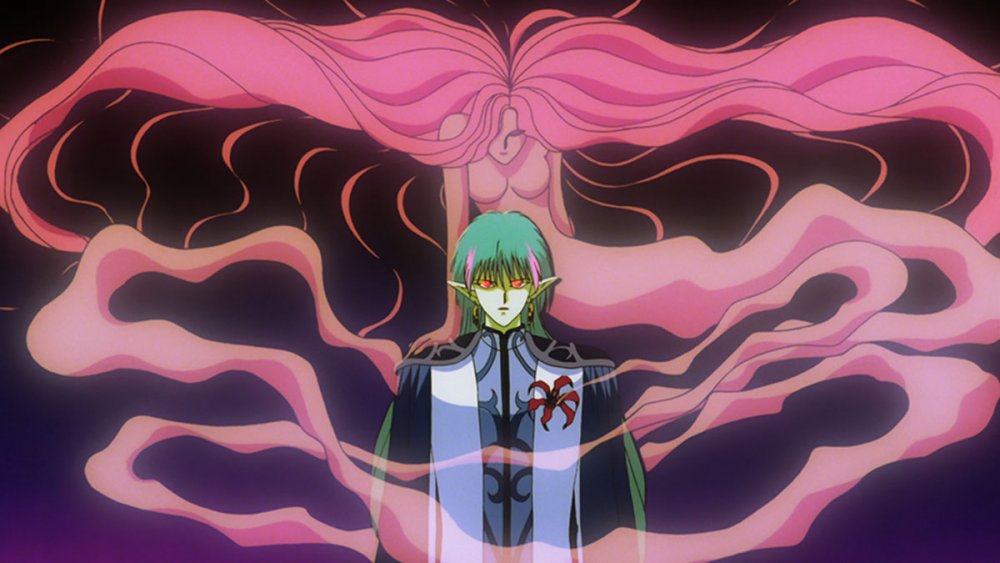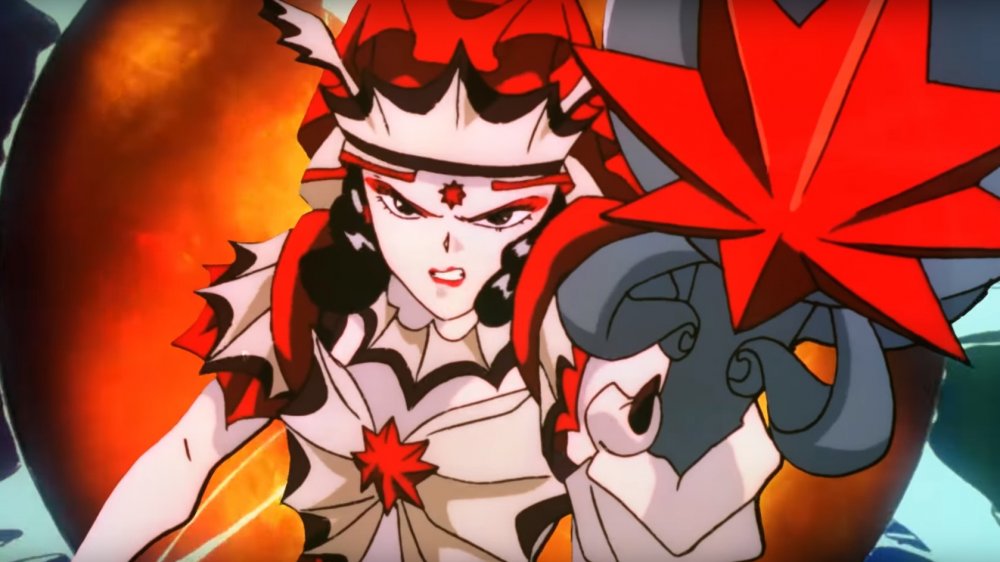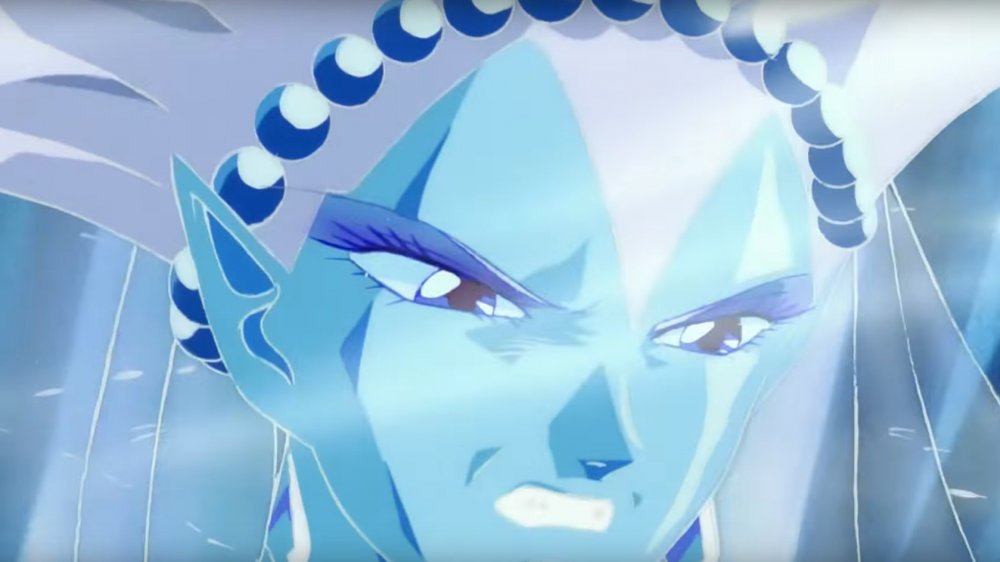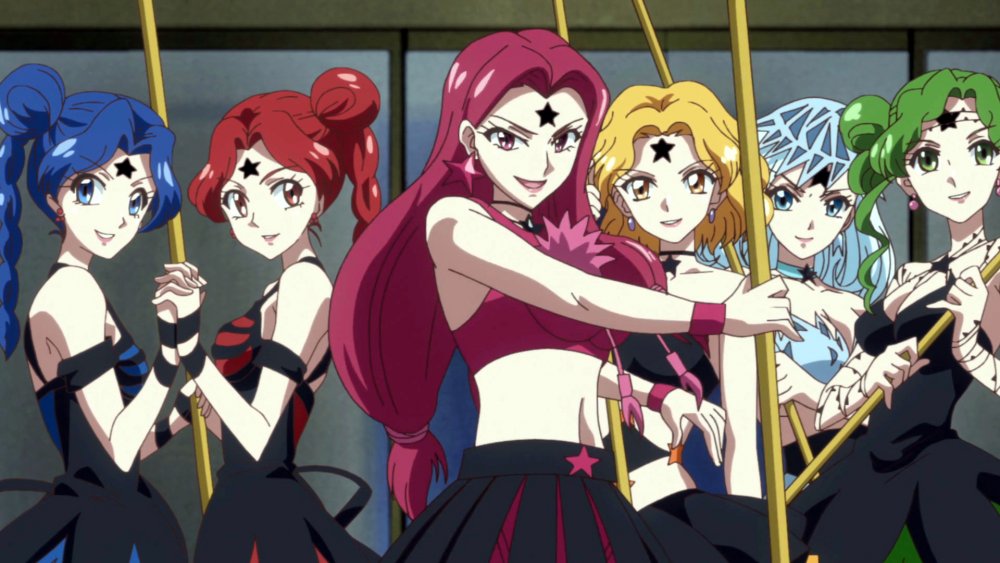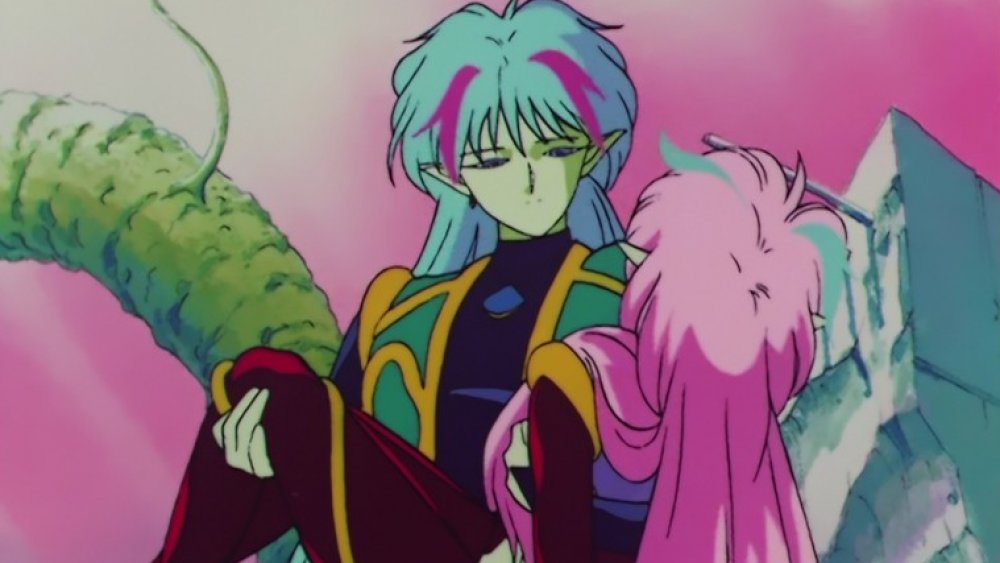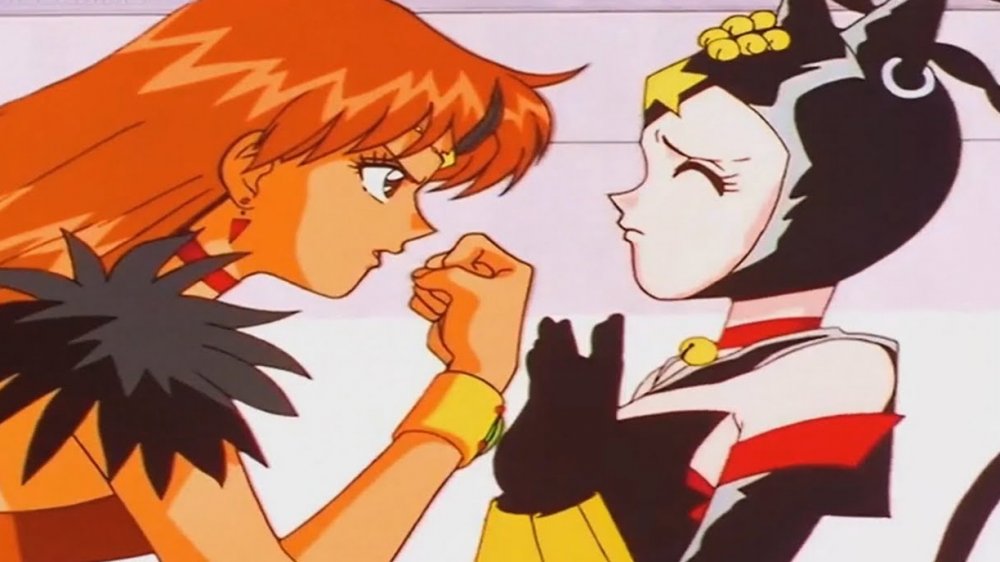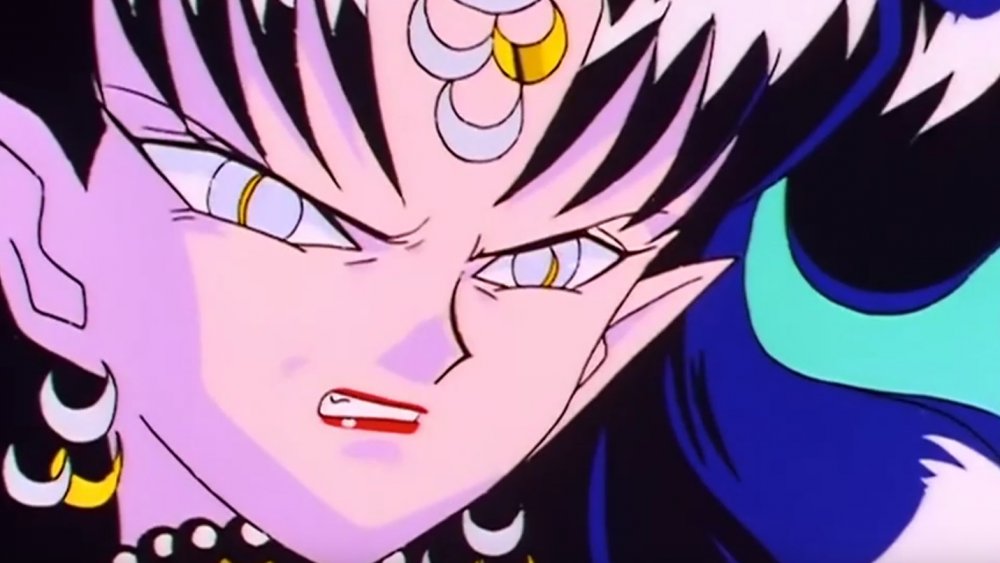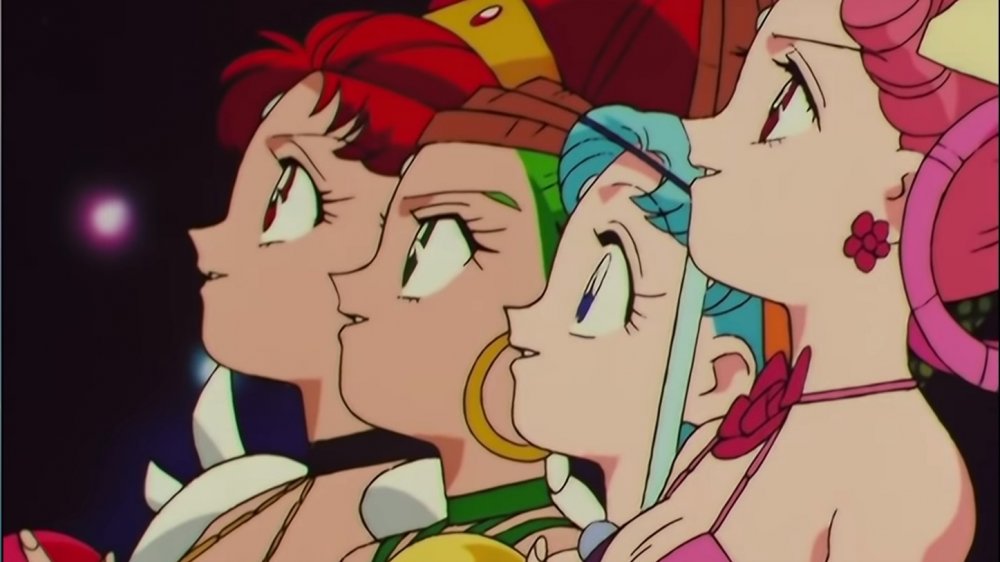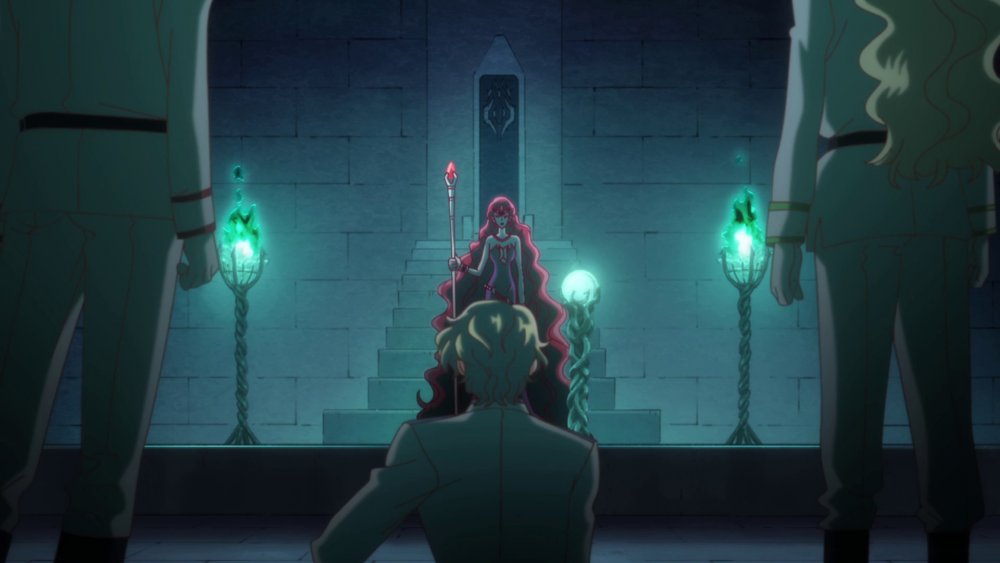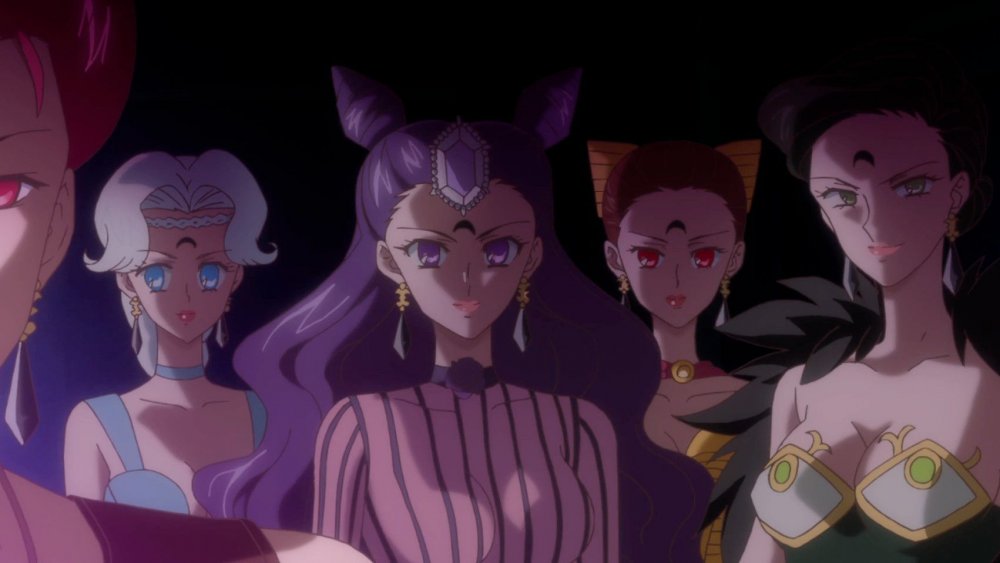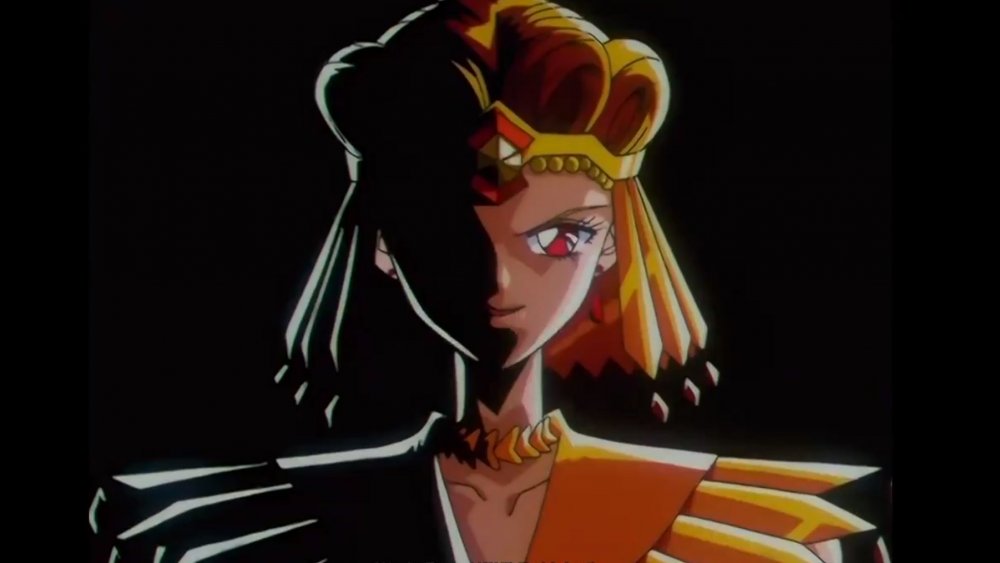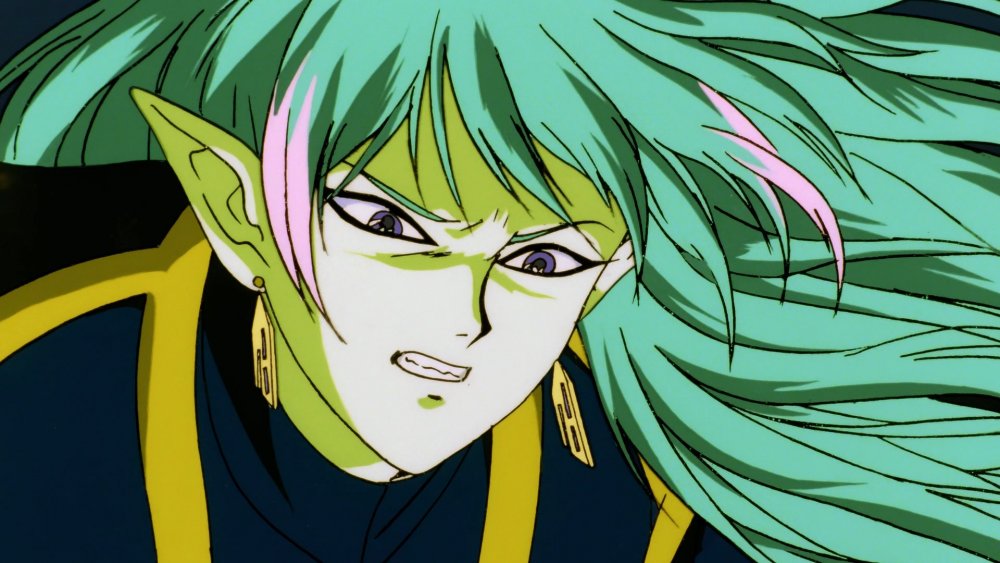Sailor Moon Villains Ranked From Worst To Best
Fighting evil by moonlight, winning love by daylight: it's the Sailor Moon way. Usagi Tsukino, fiction's most heroic crybaby, is about as a good as a good guy can get — she begins, after all, as a schoolgirl worried over a stray cat with a mysterious crescent-shaped mark on her forehead. Those who join her in the fight for what's right might be prickly, shy, weird, or vain, but they too are true-blue heroes. Generations of fans have thrilled to their adventures, learned from their trials, and celebrated their triumphs, whether it's over pop quizzes or intergalactic evil.
But as beloved as Sailor Moon's good guys might be, its villains are every bit as compelling. Some are tyrannical despots, some are twisted scientists, and some are misguided idealists, longing for the power to make the world a better place. All of them find themselves facing down the sailor senshi, and all of them, inevitably, go down — but oh, what a joy it is to watch them try. Join us as determine which of these baddies makes the most impression and which we can do without, from misguided alien children to the warlords of the stars.
Queen Badiane
In theory, Queen Badiane of Sailor Moon SuperS: The Movie is everything a Sailor Moon villain should be. Possessed with a dramatically dire ambition, she lures children to her Marzipan Castle to prey upon their dreams. That's the sort of bizarro fairy tale Sailor Moon does best, right? She locks kids in "dream coffins!" She dresses like the ruler of a country of malevolent pastry chefs! She sends sinister fairies, armed with magical, mind-controlling flutes, off to do her dirty work! She's every inch the ideal Sailor Moon baddie, from her aesthetic to her mission. Why doesn't she make more of an impression?
Ultimately, it's because she conforms so completely to the formula. True, Sailor Moon villains tend to combine the elements of girlhood fantasy — circuses, fairy tales, witches — with sinister intent to tremendous effect. But they always bring a little something extra to the table, whether that's a surprising backstory, complicated loyalties, or eventual redemption. Queen Badiane, in contrast, is just an evil queen. She has no family to play off of, no strange element to her ambition, no love interest. Moreover, everything attention-grabbing about her — her pastry-themed look, the eerie field of dream coffins, the fairies who serve her — is apparent from the first act of the film. It's all cool, but it's all familiar within fifteen minutes. If you're an evil queen in Sailor Moon, you need to have a killer schtick — but you need something else as well, if you're going to make a lasting impression.
Princess Snow Kaguya
One wonders if Princess Snow Kaguya had to be a little lackluster, in order for the movie in which she features to thrive. That would be Sailor Moon S: The Movie – Hearts in Ice, in which Luna — that's right, the cat — has a romance with a brooding astronomer, the Japanese space program takes center stage, and The Tale of the Bamboo Cutter, a 10th-century Japanese folktale, is brought into the mix. Would a truly spectacular villain have been one element too many in Hearts in Ice's jam-packed story?
Perhaps. But the fact remains that Princess Snow Kaguya is not, on her own, all that interesting. She's unique among Sailor Moon villains for being truly ancient, possibly even billions of years old, and a notably evil take on a generally beloved figure from what is believed to be Japan's oldest prose narrative. But beyond these intriguing details, she's not much more than another haughty villainess bent on making the world her own out of simple greed. Sure, her powers are pretty neat to watch in action, and her character design is another impressive entry in the Naoko Takeuchi Villainess Hall of Fame. But we already had a plethora of dazzling designs to drool over. Princess Snow Kaguya might be literally cool, but figuratively cool she is not.
The Death Busters
The Death Busters encompass evil spirits, crazed scientists, actual demons, and a gang of squabbling witches. An elite private school, Mugen Academy, acts as a front for their dastardly deeds, and at the core of it all lies Hotaru Tomoe, the girl not yet awakened as Sailor Saturn. Host to their dark forces, called their "Messiah of Silence" in the anime, they hold her captive — yet not even the sailor senshi, fearful of her apocalyptic powers, want to wake her up.
It's juicy stuff. And indeed, the arc they feature in is one of the best Sailor Moon ever did. But for all that success, the Death Busters still end up a disappointment when the power behind their flashy machinations is... boring. Pharaoh 90, the shadowy being backing the Busters from the very beginning, is a bodiless dark spirit from the far reaches of space, who wants to take over the world for the sake of taking over the world. The final battle with him is over remarkably quickly, yet even that cannot distract from the fact that it is the least spectacular of all Sailor Moon finales. He lacks any pizzazz, visual or thematic, a sin that stands out especially starkly against the characters who served him. Were the Death Busters revamped today, one hopes the creators would do away with Pharaoh 90 entirely, and let the real villains take center stage from the beginning to the end.
Ail and An
Unique to the 1990s anime, Ail and An were tragic figures from the start. Alien beings from a distant galaxy, their humanoid race was created and nurtured by the massive Makai Tree. When a brutal war over the tree's resources reduced their planet to Ail and An, the Makai Tree took the two survivors and fled to earth. There, Ail and An seek to restore the Tree draining humans of their energy — until the Tree teaches them that only the pure energy of love can restore it.
All in all, it's the stuff of classic Sailor Moon, to the point that Ail and An aren't exactly standout characters. But that's not really a bad thing, especially when their attempts to blend in as typical Japanese teenagers are as delightful as they end up being. Ail and An might be the distillation of every villain redemption arc Sailor Moon has ever done, but their genuine enthusiasm for school, the Tree, and the crushes they develop really are charming. It is that just-everyday-teens spirit that keeps them from making a bigger splash — Sailor Moon's villains tend to cut sharper, cooler, more stylish figures — and, ultimately, makes their story land a little bit more like a capital-l Lesson about altruism and love. But really, who cares? Fans will remember how fun it was to watch Ail and An handle a school play before they recall their arc's clunkier moments.
Sailor Animamates
The Sailor Animamates are Sailor Galaxia's forces, literally shackled to her by the magical bracelets she uses to keep them in line. They aren't exactly true sailor senshi, yet neither do they stand entirely apart from that role. In the anime, they are implied to be senshi corrupted by Galaxia's power, while in the manga, they are normal girls offered a senshi's power by Galaxia in exchange for their service. That latter interpretation paints a particularly brutal portrait of the Animamates when it is revealed that they killed the true senshi of their home worlds and usurped their role as planetary protectors.
Despite this, the Animamates are genuinely nuanced characters. Though the manga depicts them as truly cruel, their frustration at being powerless in the face of the senshis' might and Galaxia's expanding empire rings true and provides a unique view onto the Sailor Moon world — that of a bystander. Moreover, the anime makes them into actual, episode-spanning characters, especially Sailors Aluminum Siren and Lead Crow. A ditz and a taskmaster respectively, their friendship develops into something truly moving, making their deaths all the more tragic. The Animamates never get to reach the peaks of power they were promised, no matter who they killed, betrayed, or sacrificed. In that, they end up being some of Sailor Moon's most truly heart-rending villains.
Queen Nehelenia
If there's one thing Sailor Moon loves besides butt-kicking schoolgirls, it's evil queens. Badiane, Kaguya, Beryl, Galaxia — the series can't get enough of women with enormous ambition, fabulous outfits, and cutthroat approaches to getting what they want. Queen Nehelenia isn't just part of this fine tradition; she might be its purest expression. Motivation differs slightly between the manga's depiction of the character and the anime's: the former is implied to have always been Queen Serenity's counterpart as ruler of the moon's dark center, while the latter depicts her as having once been a genuinely good ruler, curdled by fear and temptation.
What unites them both is a tremendous sense of drama — Nehelenia swans around her evil circus in an actual ballgown — and a whole-hearted embrace of Western fairy tale tropes. Sure, Beryl and the rest are technically evil queens, but Nehelenia is the evil queen. Her manga origin is an outright riff on Sleeping Beauty: she emerges from the shadows as a malicious vision of queenly power, declares her desire for revenge, and curses the infant Usagi. Her powers are expressed through mirrors, roses, curses, dreams, and spiders. Sure, she's out for power, but a conqueror she is not. Nehelenia's world is all beauty and madness, wherein symbols and dreams matter much more than campaigns and warfare. As far as Sailor Moon antagonists go, she's the series' id — and all the better for it.
The Dead Moon Circus
For all her plots to remain beautiful forever and rule the moon as its rightful queen, Nehelenia was never a solo act. The Dead Moon Circus, her fearsome troupe of thralls, devotees, and advisers, were the real power behind her dark throne, and they were every bit as entertaining as their mistress.
What makes the Dead Moon Circus so compelling is its diversity. The Amazoness Quartet, perhaps Nehelenia's most capable cadets, are actually Sailor Chibi Moon's future senshi team, awakened prematurely and pressed into service by Nehelenia. The Amazon Trio are enchanted animals, who are entertainingly petty until they undergo a change of heart and sacrifice themselves for Sailor Moon. Zirconia, wizened ringleader of the circus, is a projection of Nehelenia's fears about aging, beauty, and madness. The Circus is a potent blend of melodrama, worldbuilding, sheer goofiness, and folklore of every stripe. They're the type of villainous group that travels under cover of solar eclipses in enormous floating circus tents, sets up fake modeling auditions to lure unsuspecting prey into their clutches, and curse noble princes with illnesses that manifest as dark roses in their chests — and darn it if they don't make you take them seriously. The Dead Moon Circus is all smoke and mirrors, until it's very suddenly something more — a reveal as thrilling as any high-wire act.
Queen Beryl and the Four Kings
Queen Beryl might just be the villain people associate most with Sailor Moon. Casual watchers might not have seen any of the movies, nor made it all the way to Galaxia's arc, but they remember hearing Beryl claim victory for the "Negaverse" between Moon Shoes commercials. Part of that notability lies in the character's early entry into the Sailor Moon series, but a whole lot of it has to do with Beryl and her Dark Kingdom unto themselves. As far as baddies go, they're some of the best around.
Beryl and her generals cut a striking figure. She's every inch the wicked witch, yet her generals (also known as the Four Kings) sport a clean-cut militaristic look. The reason why is what elevates them from so-so cadets into truly intriguing characters: they were once Prince Endymion's generals, brainwashed into Beryl's service. Yet even Beryl isn't all bad — as a flashback reveals, she was once a simple sorceress, longing for Prince Endymion's love. When it became clear that he only had eyes for Princess Serenity, Beryl's love curdled into rage, and she led the attack on the moon that would end the Silver Millennium. In the manga, the generals live on as guardian spirits, their souls preserved in the rocks from which they take their names. Beryl isn't so lucky, making her story a truly tragic one — and all the more satisfying for it.
The Black Moon Clan
The Black Moon Clan are a complex group. Anarchists from the 30th century, they terrorize Crystal Tokyo with the powers they've gained from the planet Nemesis, a world of poisonous black crystal just beyond the bounds of the solar system. A dark being known as Wiseman ultimately twists their distrust of Neo-Queen Serenity's globe-spanning rule towards his own wicked ends, but still, they had a political goal before they became a demonically-empowered gang of villains.
And what a gang it is. The Black Moon Clan are among Sailor Moon's most vibrant characters, encompassing dynamics of family, allies, lovers, and bitter enemies. At the top of the hierarchy is Prince Demande, whose beliefs have been tainted by Wiseman's evil and his simmering obsession with Neo-Queen Serenity. For all his cruelty, his love for his brother Saphir is real — but Saphir's growing discontent with Wiseman forces a wedge between them. Then there are the Spectre Sisters, the sort of villainess gang Sailor Moon excels at, fraught with unrequited love, sisterly anger, and a genuine desire to do good. Even Chibi-Usa, Usagi's daughter from the 30th century, joins their gang briefly when Wiseman's power transforms her into Black Lady, a femme fatale nightmare born of her worst impulses. There's something for everyone in the Black Moon Clan, from family politics to searing romance, making them one of Sailor Moon's best bad guy organizations.
Sailor Galaxia
Sailor Moon was an ever-expanding story. One senshi became five, then the outer senshi completed the solar system, and finally the Starlights introduced the concept of senshi in the further corners of the universe. It's only fitting that the series ended with a villain possessed of truly interstellar ambitions. Enter Galaxia. Sailor Moon's answer to Alexander the Great, Galaxia's motivations differ between the manga and anime, but in neither is she satisfied with protecting one measly planet as its guardian senshi. She wants an empire, and as she proclaims in the manga, she "is the one chosen by God" to possess the strongest sailor crystal of all: Sailor Moon's. Nothing, she knows, will stop her, and nothing does until she comes up against the titular heroine herself.
Galaxia's manga incarnation in particular introduces a fascinating concept: senshi who are not proud to protect their planet. Galaxia recalls her home planet as "trash," interrogating Sailor Moon as to how she might have felt to have been chained to a place that only ever made her feel worthless. Moreover, one can't help but marvel at her sheer bravado, especially when it's revealed that Galaxia has allied herself with the literal force of chaos itself. She is, of course, felled by her own hubris, but Sailor Moon's compassion manages to reach her, in the end — though not before she perishes in the manga. That moment isn't exactly a redemption, but it is an unforgettable sendoff to a cosmic conqueror.
Fiore
Compared to other Sailor Moon villains, Fiore is fairly low-key. A lonely alien, he spent some of his youth on Earth, befriending a young, orphanage-bound Mamoru. Years later, Fiore returns, having finally found a flower beautiful enough to present to Mamoru: the Xenian flower. He doesn't know it has poisoned him with rage, nor that it will use him to seed the earth with its fell blooms, only that a silly girl with blonde pigtails stands between him and Mamoru. She must be destroyed, and the Xenian flower promises to help him do just that.
Fiore's story is the subject of Sailor Moon R: The Movie, and thus had to begin and end within 60 minutes — but this brevity only strengthens his story. Fiore is a damaged dreamer, the winnowed-down heart of every Sailor Moon character, heroic or otherwise. It's no coincidence that his defeat is preceded by flashbacks of every senshi, recalling a moment at which they felt too quiet, too angry, too strange, or too stupid to ever find friends: he is the future they feared was their own. His defeat isn't violent — he is freed from the Xenian flower's control by Mamoru, revives Sailor Moon with the last of his life, and fades away. Perhaps he is reborn, or perhaps he is simply gone. But his story lingers — one of love without limit, shared with all, only grown stronger for having been tested by a lonely boy from beyond the stars.
